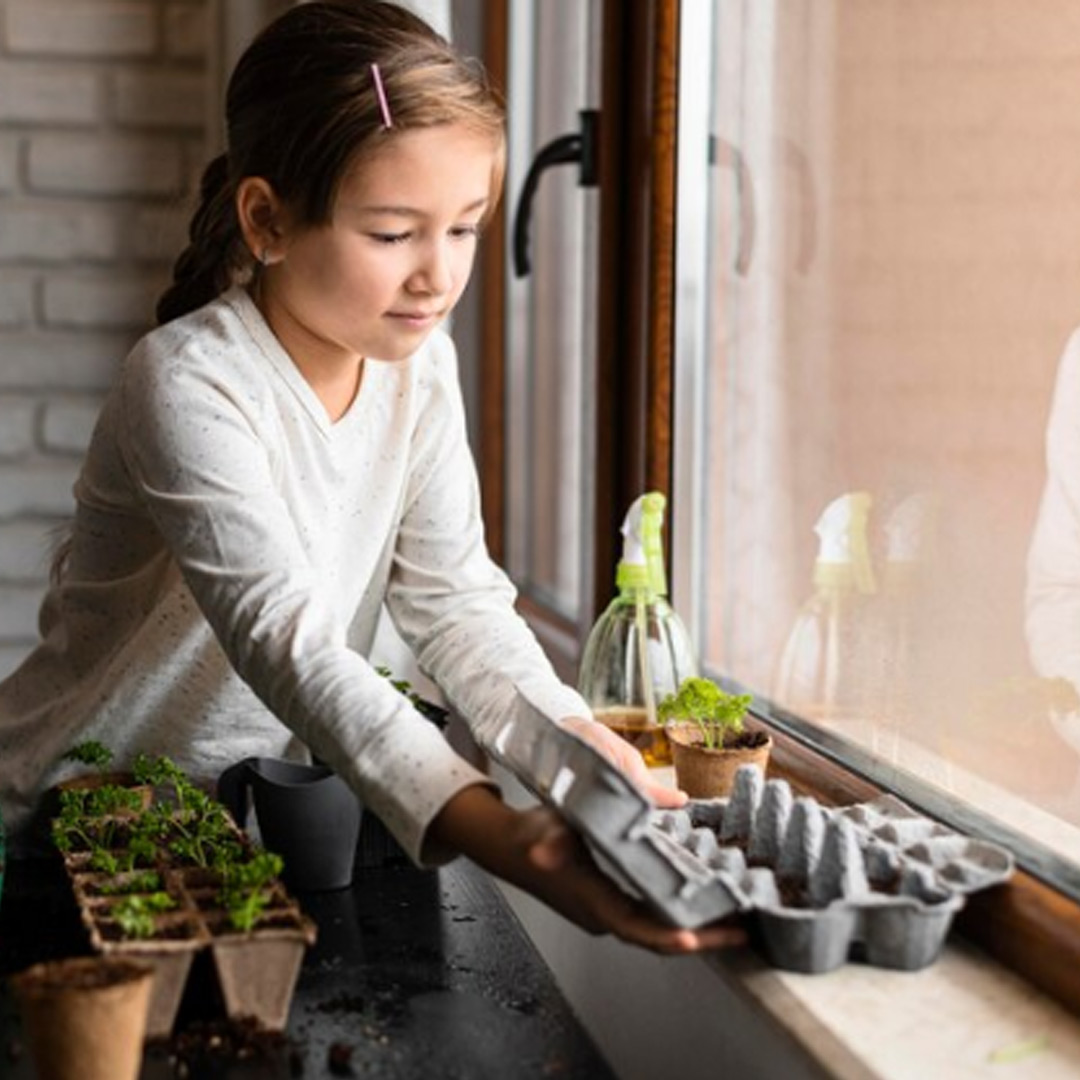Please enter the code we just sent to whatsapp 91-11-46710500 to proceed
Didn't Receive OTP?

Teaching preschoolers Environmental Studies (EVS) is crucial as it lays the foundation for their understanding of their surroundings. Fun and interactive activities help the children learn and develop critical thinking skills and inquiry-based learning daily. Let us learn 15 EVS activities which are easy to do and are also hand-brain coordinated breaking these concepts into different groups.
Title: Demonstrate Personal Hygiene Importance
Activity (Visual): Using visual aids and props, Children need to guess Daily hygiene items (toothbrush, soap etc.) in this game helping kids boost critical thinking of things they need daily and how it is categorized.
Goal: Awareness of body safety
Task: Show a basic, age-appropriate presentation designed to teach children the difference between what constitutes good or bad touch, encouraging EQ & Self-awareness.
Goal: Investigating the 5 main senses.
Activity: Blindfolds and props help children identify objects through senses other than sight, teaching the awareness and observation of moving things.
Goal: Reiterate hygienic habits.
Exercise: Pair children and make them demonstrate how to wash their hands or brush their teeth, so they can put the learning into action.
Aim: To Learn and Label the parts of the Plant.
Socialization: Encouraging this activity requires children to participate in a simple craft-making process where they make leaves, stem, and roots of the plant through paper cutouts.
Objective: To recognize and understand the VIBGYOR colours.
Activity: Children use a prism to split light and observe the seven colours of the rainbow. They then recreate their rainbow using coloured paper, combining visual learning with hands-on crafting to better understand how light forms a rainbow.
Aim: Create an Aquarium, Forest, or Farmhouse
Craft: Children work in groups on a collaborative project to create mini spaces like aquariums, forests or farmyards using craft materials. The child chooses animals to fill the corresponding habitats, so he or she learns about animal kinds as well as makes up stories. For example, they can draw the ecosystem on paper or build it with clay or toy animals. The tactile approach enhances their ability to identify and categorize animals and their hands-on understanding of landscapes, habitats, and ecosystems.
Aim: To understand about what are the requirements for a plant to grow and how they are useful in our environment.
Activity: Children plant seeds and watch them grow, learning about the basics of sunlight, water, and soil. Along the way, they discover the benefits of plants, such as producing oxygen, providing shade, and bearing food. This personalized and experiential approach helps children develop responsibility and empathy towards nature.
Objective: Understand day and night cycles.
Activity: Use a flashlight and a globe to demonstrate how Earth’s rotation causes day and night.
Aim: To know the planets and solar system.
Activity: Making a simple model of the solar system with coloured balls (representing planets) can encourage young kids to be more creative and curious.
Purpose: To teach the stages of the water cycle.
Demonstration: Evaporation and Condensation with a Small-Scale Water Cup Activity
Goal: Identify Bodies of Water (lakes vs rivers vs oceans)
Worksheet: Produce a map with images of different bodies of water for children to pinpoint and learn the names, promoting spatial learning.
Goal: Strengthen the basic body safety message.
Activity: Role-playing through examples of good and bad touches
Objective: To reinforce phonics knowledge.
Activity: Montessori boards are a great tool for children to practice forming simple CVC words like "cat," "dog," and "sun." By arranging letter tiles in the correct sequence, kids can effectively blend sounds and enhance their early reading and writing skills. This hands-on approach helps reinforce phonetic awareness as they sound out words like "c-a-t."
Objective: Encourage speaking confidence.
Activity: Children engage in small performances like storytelling, role play, or the recitations of poems for school events, such as Grandparents’ Day or Annual Day. For instance, a child may act out a scene from a story or deliver a simple news segment. These opportunities help them practice speaking in front of an audience, improving their public speaking, self-expression, and confidence in a supportive environment.
Shape Your Kid's Future with Bambinos Classes | Bambinos.live India's No. 1 English Communication Platform For Kids | Click here to Book a Free Class Limited time offer.